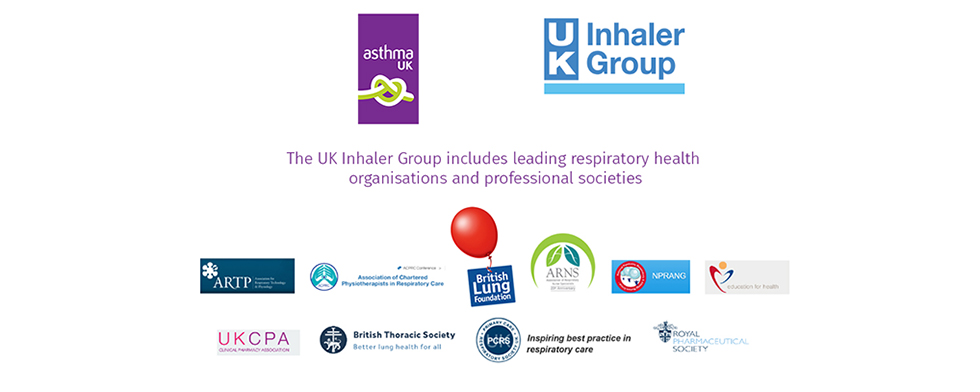
Expert advice on how to use your spacer with a mask
Are you struggling to use your inhaler and spacer with a mask? We show you how to get it right in this short video.
Hello, I'm Omar Usmani. I'm a consultant respiratory physician. Using a spacer with your inhaler means more of the medicine gets down into your lungs and is a great way to help manage your symptoms. Getting the technique right is very important. It may take a few tries to feel comfortable using a spacer but it does get easier with practice. I'm going to show you how to use a spacer with a face mask. If you're helping a child use a spacer with a face mask, watch our video on children and spacers. There are lots of different spacers with face masks. Whichever one you're using the breathing technique is the same. There are two different breathing techniques you can use. Healthcare professionals usually recommend the tidal or multiple breathing technique when you're using a spacer with a face mask. Some pMDI inhalers have a dose counter. If yours has one, check it isn't empty. Hold your inhaler upright and take the cap off. Check that there's nothing inside the inhaler mouthpiece. Shake the inhaler well. Push your inhaler into the hole at the back of the spacer with the indent for the nose on the mask facing upwards. Put the mask onto your face to make a tight seal over your nose and mouth. Sit or stand up straight and slightly tilt your chin up as it helps the medicine reach your lungs. Press the canister on the inhaler once and breathe in and out slowly and steadily five times. Remove the mask from your face. If your healthcare professional has recommended the single breath and hold technique. Some pMDI inhalers have a dose counter if yours has one check it is not empty. Now hold your inhaler upright and take the cap off. Check that there's nothing inside the inhaler mouthpiece. Shake the inhaler well. Put your inhaler into the hole at the back of the spacer with the indent for the nose on the mask facing upwards. Breathe out gently and slowly away from the inhaler and spacer until your lungs feel empty and you'll feel ready to breathe in. Put the mask on your face to make a tight seal over your nose and mouth. Sit or stand up straight and slightly tilt your chin up as it helps the medicine reach your lungs. Press the canister on the inhaler once and breathe in slowly and steadily until your lungs feel full. Remove the mask from your face and, with your mouth closed, hold your breath for up to 10 seconds or for as long as you comfortably can. Then breathe out gently. Finally, if you need to take another dose, with the mask away from your face, wait 30 seconds to a minute and shake the inhaler again. Then repeat the steps. Some small volume spacers make a whistling sound if you are breathing in too fast. When you've finished, take the inhaler out of the spacer and replace the cap. If you've used an inhaler that contains steroids, wipe your face with a damp cloth, then rinse your mouth with water and spit it out to reduce the chance of side effects. Remember, you can get more top tips on using your inhaler by watching our other videos.

This video is not a substitute for professional medical advice. If you find it hard to use your inhaler, or find breathing problems are interfering with your daily life and sleep, see your GP. If you are having an asthma attack right now or cannot breathe normally and your blue reliever inhaler isn't helping or if you don’t have one, please call 999 for an ambulance. Asthma + Lung UK does not endorse nor recommend specific products. See our general disclaimer.

Get support
Call our Helpline for support with your condition. Get advice on your medicines, symptoms or travelling with a lung condition, or just call us to say hello.




